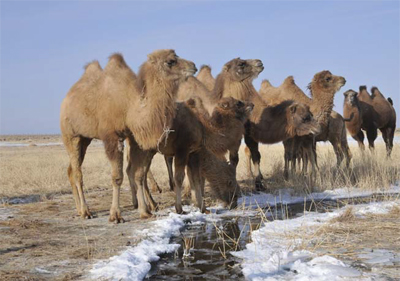LONDON (TIP): Think of the frozen arctic and you would imagine sea lions, penguins or polar bears. But how about a camel? British and Canadian researchers have discovered the first evidence of an extinct giant camel in the high Arctic. The three-and-a-half-million-yearold fossil has been unearthed on Ellsmere Island making it the furthest North a camel has ever been found. This ancient beast was three metres tall at the hump and about a third higher than the present day living camel species.
The researchers say it’s a very important discovery. “These bones represent the first evidence of camels living in the High Arctic region. It extends the previous range of camels in North America northward by about 1,200 km and suggests that the lineage that gave rise to modern camels may have been originally adapted to living in an Arctic forest environment.” Scientists from University of Manchester used collagen fingerprinting from bone fragments to access the animal. They extracted minute amounts of collagen, the dominant protein found in bone, from the fossils.
Using chemical markers for the peptides that make up the collagen, a collagen profile for the fossil bones was developed. The team then compared the profile to 37 modern mammal species, as well as that of a fossil camel found in the Yukon. He found that the collagen profile for the High Arctic camel was almost an identical match to the modern day Dromedary as well as the Ice-Age Yukon giant camel. The collagen information, combined with the anatomical data, demonstrated that the bone fragments belonged to a giant camel as the bone is roughly 30% larger than the same bone in a living camel species.
